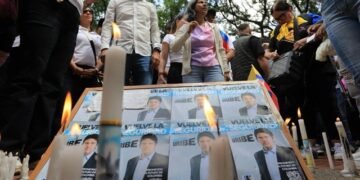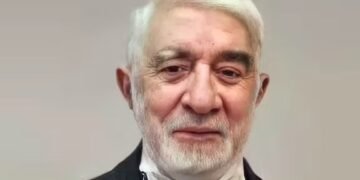SAN DIEGO — A late-night cross-country flight ended in disaster early Thursday morning when a private jet crashed into a residential neighborhood near Montgomery-Gibbs Executive Airport, killing all six people on board. Officials say the pilot attempted to land despite dense fog, an inoperative weather system, and runway lights that were out of service.
The Cessna 550 Citation, owned by music executive and licensed pilot Dave Shapiro, went down just two miles short of the runway at approximately 4 a.m. local time, igniting a fire that damaged multiple homes and sent eight local residents to the hospital with non-life-threatening injuries. Remarkably, no one on the ground was killed.
A Risky Decision in Poor Conditions
Investigators with the National Transportation Safety Board (NTSB) confirmed Friday that the pilot was aware of deteriorating weather conditions and the broken weather alert system but chose to proceed with landing. Audio recordings reveal a moment of hesitation as the pilot considered diverting before ultimately telling air traffic control: “Doesn’t sound great but we’ll give it a go.”
The pilot did not mention the lack of runway lights to controllers, though a Federal Aviation Administration (FAA) notice had been issued in advance. Whether the pilot reviewed this alert remains under investigation.
Former crash investigator Jeff Guzzetti noted that fog, pilot fatigue from the overnight flight, and failure to divert to an alternative airport were likely contributing factors. “This has all the signs of a classic weather-related crash,” he said, adding that protocol would have required a missed approach and diversion once visibility was compromised.
A Community Shaken
Fragments of the jet were found scattered near power lines, and one wing was torn off upon impact behind a row of homes. One house was destroyed when an incinerated truck, launched by the explosion, crashed into the living room. The flames spread rapidly, igniting cars and vegetation throughout the block.
Ben McCarty, a 13-year Navy veteran, was inside the home with his family when the crash occurred. “All I could see was fire,” he said. “The roof was on fire. You could see the night sky from our living room.” He and his wife evacuated their children and pets with the help of neighbors, climbing over a back fence to escape the flames.
Their house was completely destroyed. Ten other homes were damaged, and over 100 residents were temporarily evacuated as emergency crews battled the blaze.
A Grim Toll in the Music Industry
Among those killed in the crash were Shapiro, 42, a prominent figure in the rock music scene and co-founder of Sound Talent Group, and two of the agency’s young booking associates: Kendall Fortner, 24, and Emma Huke, 25. Also confirmed dead was the former drummer of the metal band The Devil Wears Prada, though his name has not been officially released.
Shapiro had flown the group from New York City, where his client Pierce the Veil performed at Madison Square Garden. The jet made a scheduled fuel stop in Wichita, Kansas, before continuing toward San Diego.
Federal aviation rest regulations do not apply to private flights, though Guzzetti emphasized that pilot fatigue after such a demanding schedule may have impaired judgment.
A Growing Pattern
Thursday’s incident is part of a troubling pattern. It comes just weeks after a fatal crash in Simi Valley and echoes a 2021 crash in another San Diego suburb that killed two people, including a UPS driver.
Despite the alarming number of crashes, aviation remains statistically the safest mode of transportation. Still, incidents like this raise critical questions about oversight, decision-making in poor weather, and risk management in private aviation.
As investigators begin what is expected to be a year-long analysis, San Diego residents like Ben McCarty are grappling with trauma and reconsidering life under the flight path.
“My kids loved watching the planes,” McCarty said. “But now, I don’t think I’ll ever feel safe here again.”

 English
English






































